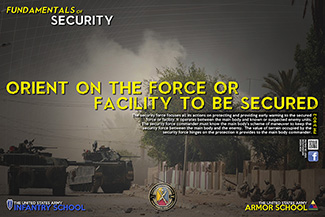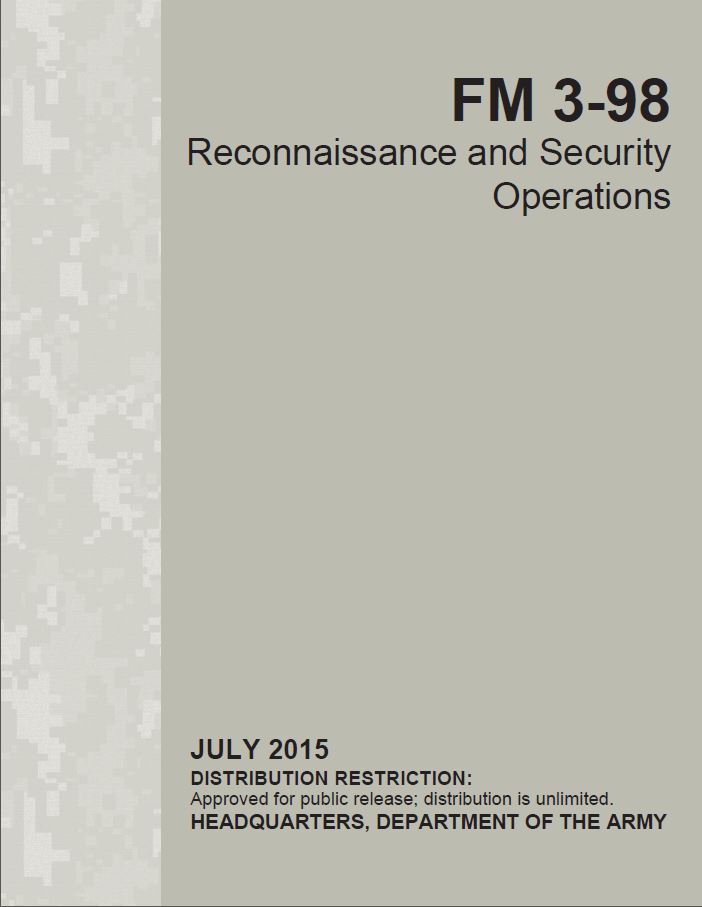ORIENT ON THE FORCE OR FACILITY TO BE SECURED
The security force focuses all its actions on protecting and providing early warning to the secured force or facility. It operates between the main body and known or suspected enemy units. The security force must move as the main body moves and orient on its movement. The security force commander must know the main body's scheme of maneuver to keep the security force between the main body and the enemy. The value of terrain occupied by the security force hinges on the protection it provides to the main body commander.
Route Security 1967-1968
Era: Vietnam
The defense of main supply routes constituted one of the most important missions in Vietnam. Along the major roadways flowed the supplies necessary to sustain combat operations by the US and South Vietnamese army forces. These routes became battlegrounds as Viet Cong and North Vietnamese soldiers routinely attacked the routes and the convoys that traveled them.
Between September 1967 and November 1968, the 2d Squadron, First Cavalry Regiment executed a route security mission to protect the 4th Infantry Division’s main supply route through the Central Highlands of South Vietnam. Enemy efforts to sever this supply artery occurred via mine attacks, small-scale ambushes, harassing fires delivered from standoff distances, and full scale attacks. The squadron averaged three mine attacks per week, harassing and standoff attacks twice a month, and a major attack every third month. Most of these actions were executed by North Vietnamese sapper and infantry elements.
To minimize the impact of these attacks, the cavalry squadron reshaped the terrain in the vicinity of the route under protection. A 300 meter strip on either side of the road was cleared of all vegetation to deny the enemy concealed avenues of approach to the road and reduce the risk of a surprise attack. Observation posts were established on dominating terrain along the route. Each such OP was manned 24 hours a day, and many of these positions were equipped with ground surveillance radars that operated throughout the nighttime hours. Normal manning for each OP included a tank, a mortar carrier, and one or more armored cavalry assault vehicles. This mix ensured sufficient firepower for the OP to be defended against all but the largest attack. During nighttime contacts, the ground surveillance radar could be used to establish the general location of an enemy force, which was then engaged either by the tank using infrared or a white searchlight, or indirect fire by the mortar carrier. The OPs were supplemented with regular night patrols and periodic night ambushes that focused upon those areas that could not be observed or monitored by the OPs. Mine clearance patrols during the day further helped to reduce the risk of loss to those mines that did get placed. Hence, the patrols and OPs constituted a continuous, all day and night surveillance network along the entire route.
The squadron also paved the road, converting it into a hard surface. This action complicated efforts to mine it, but made efforts to detect evidence of mining easier. The newly surfaced road made it an all weather route, facilitating the rapid movement of both supply convoys and reaction forces.
Security Fundamentals
- Provide early and accurate warning
- The clearance of vegetation on both sides of the road made it easier to detect efforts to mine the route, forcing North Vietnamese sappers to break cover to reach it. The observation posts and patrols alerted the squadron to an approaching hostile force before it could actually attack the route or any convoys.
- Provide reaction time and maneuver space
- The observation posts, patrols, and clearance of vegetation provided the squadron commander with the time and space necessary to implement a response, suited to the threat size and nature. The hard surfacing of the road further expedited the movement of a quick reaction force.
- Orient on the force or facility to be secured
- All of the actions taken by the squadron were designed to protect the 4th Infantry Division’s main supply route and deter, defeat, or complicate enemy efforts to attack the route or convoys using it.
- Perform continuous reconnaissance
- The integrated use of observation posts, ground surveillance radar, regular night patrols, and mine clearance patrols ensured continuous reconnaissance all along the route.
Source: CPT Franklin Y. Hartline, “Route Security in the Central Highlands,” Armor LXXVIII, 6 (November-December 1969), pp. 21-24.


